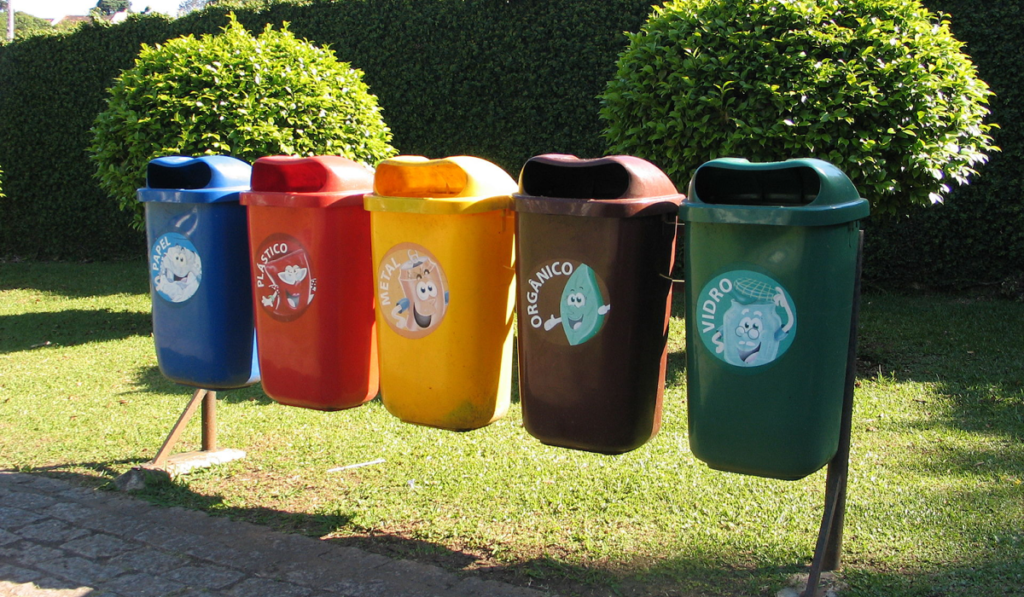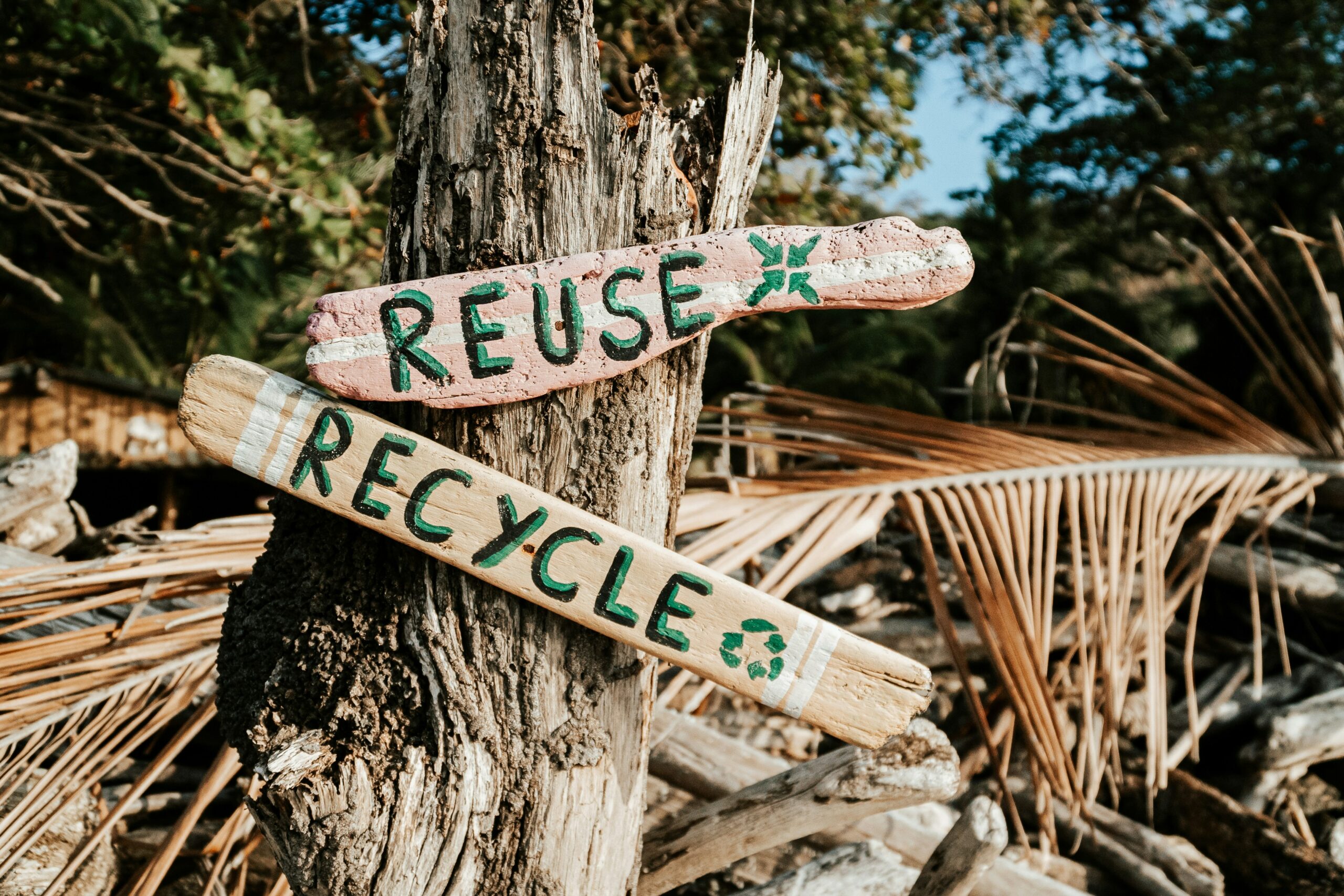Why We Can Solve San Diego’s Trash Problem 101

Trash is everywhere around us. We do a great job of containing it in a trash bag, moving it away from our place of home or business, and dumping it in nearby landfills. Since the 1960’s, we’ve nearly tripled the amount of trash produced in this country. What was a low cost convenient way of managing our waste has now become a costly out-of-sight problem. The best part about this problem, however, is that we have many ways to solve it.
Why Businesses Should Care?
Whether you refer to it as trash or waste, we should ask the question of why businesses should care about this problem? We care because trash is costly. As businesses, we are innately sensitive to cost, profits and loss, and we are always making sure we remain in the black. Beyond the environmental and health impact, we need to consider the economic costs of trash to San Diego and our businesses.
Food Waste Doesn’t Make Economic Sense
Americans create a lot of trash. Based on US EPA’s 2015 data, each American produces near 2,000 pounds a year; the US produced 262.4 million tons of trash just in 2015. Upsettingly, a large portion of the trash created is due to food waste; for example, about 40% of all our food is thrown away. That’s like taking near half the food produced from our farm lands and dumping it straight into the trash can. And when you consider this is happening at a time when one in eight Americans struggles to put enough food on the table, it feels like we are literally throwing our hard earned dollars out the window.
The cost of trash management is extremely high, especially when landfills across the US are reaching their capacity. All 1.4 million San Diegans send their trash/waste to the Miramar Landfill where it receives and disposes of approximately 1.58 million tons of trash per year. The only City-run landfill, the Miramar Landfill is expected to reach capacity and shutdown by 2030.
Prior to the Miramar Landfill closing, the City will have to search for another landfill site or send truckloads of trash/waste to other cities. Both options are exorbitantly costly and will likely lead to greater costs for businesses and residents alike.
Factoring in the air, soil and water pollution impacts from waste and landfills, it seems like solving this problem would be good for business and our health.
China Refuses Our Trash
Another recent development should motivate us to address our City’s waste problem. For nearly two decades, cities and waste municipalities in the US have relied on shipping our collected waste and recycling to China, who, due to limited resources, had consistently purchased our recycled materials to help drive its own economy. However, In September 2017, China officially refused acceptance and purchase of US sourced waste and recycled material, and this caused a recycling market crash in the US. Because we did not prioritize waste reduction or establish a consistent recycling market in the US, the trash generated in near every US city is literally piling up, and in worst cases, incinerated. In San Diego, this has serious implications for the City’s cost and budgeting plans for waste.
$10,000 Fined A Day
In California, all cities are required to reduce, reuse, or recycle half of their trash or otherwise be subjected to a $10,000 per day fine. Although currently the City of San Diego has met this requirement, it’s very likely that this 50% goal to reduce, reuse or recycle may not be met in San Diego’s near future. This is because of the increasing trash generation in every metropolitan city, loss of trash disposal collected by China, and lack of an effective recycling process in San Diego.
San Diego Can Solve This
But, we don’t have to live with this costly and unsanitary waste problem in San Diego. We have options in front of us because this is a solvable problem. According to the City of San Diego’s Environmental Services, 76% of the waste collected can be recycled. And that’s why we can fix this problem. Besides, without an improved waste reduction and recycling program, the Miramar Landfill’s continued operation is at risk. The great news is that this approach to reduce our waste problem is in keeping with the City of San Diego’s Zero Waste goal outlined in the San Diego Climate Action Plan.
Others Have Done It. So Can We.
Many examples from other cities show how shifting our daily waste sorting habit can reduce the cost of waste management in San Diego, and even offer a profitable recycling market. Other cities like Curitiba, Brazil and Amsterdam, Netherlands, have effectively provided direct sorting mechanisms for trash disposal. This reduces the cost of waste sorting after mixing, which is more expensive because of the labor cost and the associated challenges of cleanly separating similar trash items into recyclables and landfilled waste.
Our Health Is At Risk
In addition to the costly trash problem, an unattended waste situation will result in unnecessary health impacts on our local communities. To name a few:
- Since over 82% of US landfills leak, this leads to contamination of our groundwater, which would directly affect our drinking water source.
- Potential trash incineration due to loss of landfill disposal opportunities would create toxic air emissions, such as dioxins and volatile organic chemicals.
- Excessive methane emissions not captured by managing waste would be an increasing carbon source.
The Beauty of A Closed-Loop System
The long-term solution to waste management is a closed-loop system where waste becomes useful goods. Unfortunately, our current recycling approach is incomplete and still produces waste. A closed loop system allows us to reuse the same materials over and over. An effective closed loop waste management takes time to establish. Now is the time to effectively reduce our waste, recycle, and along the way, create a profitable market for turning waste into goods.
Composting Is An Easy Step #1
With any large project, taking small steps is the key to success. With trash, one of the simplest things we can do first is to reduce our waste generation. And we can start immediately with adopting composting into our lifestyle. A significant source of trash is food waste and we can start by diverting that food waste at home or in our business. This fits in with San Diego’s Zero Waste equation. Composting on site (home or business) could significantly reduce waste transported to a landfill (up to 40% reduction in fact). For this reason, it would be good to have established facilities to manage food waste disposal or composting so we can plan for successful diversion of this unnecessary waste.
Composting is an effective and efficient approach to help divert waste from the landfill. Compost material could be collected at a curbside pickup, next to our trash can, and we would have organic compost that is turned into healthy organic soil. This solution is already adopted and used effectively in other cities, like San Francisco, Boulder, Denver, Portland, and many others who are focused on making trash management more cost-effective and sustainable.
Whether we like it or not, changing how we manage our trash must happen. First, our zero waste target is a legally-binding goal. Second, it’s economically sound business. And third, it’s critical for our health and planet. We need to take steps to improve our waste disposal problem at home and in our business so we can maintain our beautiful city. We need to focus on individual practices and setting good city policy so we solve this problem collectively.
They Don’t Last Forever
Landfills were never designed to last forever. On average, a landfill lasts between 25-30 years. In fact, the Miramar Landfills is composed of three different landfills (North, South and West). North and South Miramar landfills reached capacity and are currently closed. Since the 1990’s, landfill lifespans have shortened because of increased trash generation. The West Miramar Landfill facility has been in operation since 1983, which has lasted ten years beyond its lifespan. The West Miramar Landfill is expected to close by 2030 or possibly sooner if we don’t adopt better waste and recycling management practices. And although, we have managed to implement some solutions to expand its use, San Diego’s growing population, housing needs, and greater waste generation will mean we must find other exit (closed loop) points for our trash.
Think Bigger
To better plan for the future, San Diego needs a countywide composting facility or system because this is both a city and regional problem. For example, we should consider building infrastructure adjacent to the landfill or placing an expanded composting facility near the Miramar Landfill to receive composting. Having a long-term plan or facility in place would alleviate our current waste problem and help increase the West Miramar Landfill’s lifespan. Even better is that along the way, we would not only reduce trash, but we would decrease the potential for air and water pollution.
Perfect Time To Act
When a costly problem with a clear solution exists, it is the perfect time to act. And this trash/waste problem will not disappear, which is why businesses across different sectors care about trash and why we have made it a priority issue at Business For Good. It is imperative we have political will, public awareness and broad support from residents and businesses to fix this very solvable problem.
We Want To Be Part Of The Solution
We (businesses) have had a long history of producing a lot of waste and it’s why we want to be part of the solution.
Businesses care about getting behind long-term policy issues with clear solutions. We know that new markets and business opportunities get created once we stop avoiding the issue and take bold actions to solve the problem. We know it’s possible to solve this trash/waste problem. We see solutions ahead when we encourage out of the box solutions, such as different sorting and compost pick up alternatives. We see solutions ahead when we support a distributed, market-based, hyper-local solution to how we handle our trash. Work with us to see and implement the solutions.
In the meantime, here are some easy everyday solutions:
At your business or place of employment
- Take a few minutes with this interactive tool to learn ways to make your office greener.
- Do an inventory of where your waste comes from. Think of it as a little dumpster-diving with all the right motives.
- Designate someone to be the green captain or champion to guide your company’s efforts.
At home
- Keep the city of San Diego’s “What Goes Where” handy guide as a refresher
- Even if you’re tight on space, you can start composting on your countertop
- Check out I Love A Clean San Diego’s Waste Free SD
- Take advantage of the City of San Diego’s composting voucher program
- Search up composting alternatives and you’ll find dozens of composting methods that fit your lifestyle.
